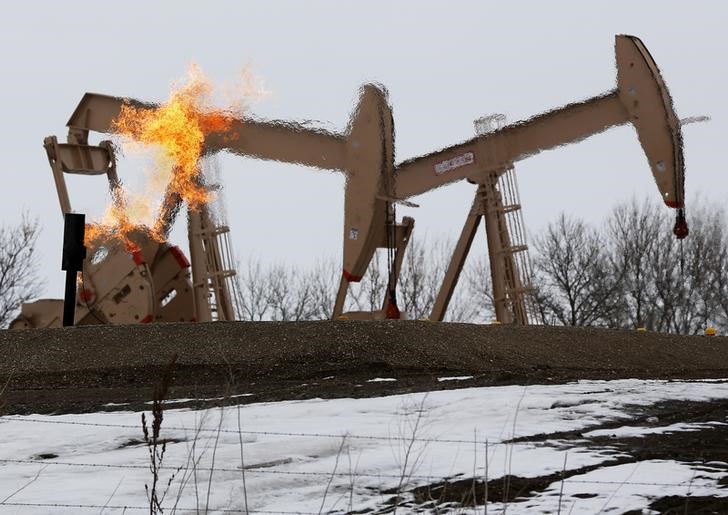
Investing.com– Oil prices settled lower Thursday as heavy decline in weekly crude inventories was offset by fresh signs of weaker fuel demand following a larger-than-expected build in weekly U.S. gasoline supplies.
At 14:30 ET (18:30 GMT), fell 1.7% to $82.03 a barrel, while fell 1.5% to $78.01.
Large dip in Gasoline supplies flags demand worries
U.S. gasoline stockpiles rose by 2 million barrels last week, well above the 1M increase expected, following a decline in demand of 166,000 barrels per day in the week ended May. 24.
Distillates stocks also increased much more than expected, with a build of 2.5M barrels, compared with forecast for a 400,000 barrels.
The build in fuel product inventories was sparked by pick up in refining activity to a pace of 94.3% of their capacity, up from 91.7% in the previous week.
The weakness in fuel demand offset a large 4.2M barrel decline in and comes even as the energy hungry U.S. summer driving season is now underway.
US GDP growth slows
Data released earlier Thursday showed that U.S. rose 1.3% in the first quarter, a substantial revision lower from the 1.6% initial estimate, and below the 3.4% growth seen in the prior quarter.
While these showed a slowing in economic growth, worries over elevated inflation levels could mean that the Federal Reserve keeps interest rates high for longer – a trend that is expected to eat further into demand.
Concerns over high U.S. interest rates have been a key weight on oil prices in recent sessions, as several Fed officials also warned that the bank needed more confidence inflation was easing before it could begin trimming rates.
To this end, data — which is the Fed’s preferred inflation gauge — is due on Friday, and is likely to factor into the central bank’s outlook on interest rates.
OPEC+ meeting due
Beyond the Fed and interest rates, oil markets were also awaiting a meeting of the Organization of Petroleum Exporting Countries and allies (OPEC+), which is set to take place virtually on June 2. The cartel is widely expected to maintain its current pace of production cuts past an end-June deadline.
data from China, the world’s biggest oil importer, is also due on Friday, and is set to offer more economic cues on the country.
(Peter Nurse, Ambar Warrick contributed to this item.)

